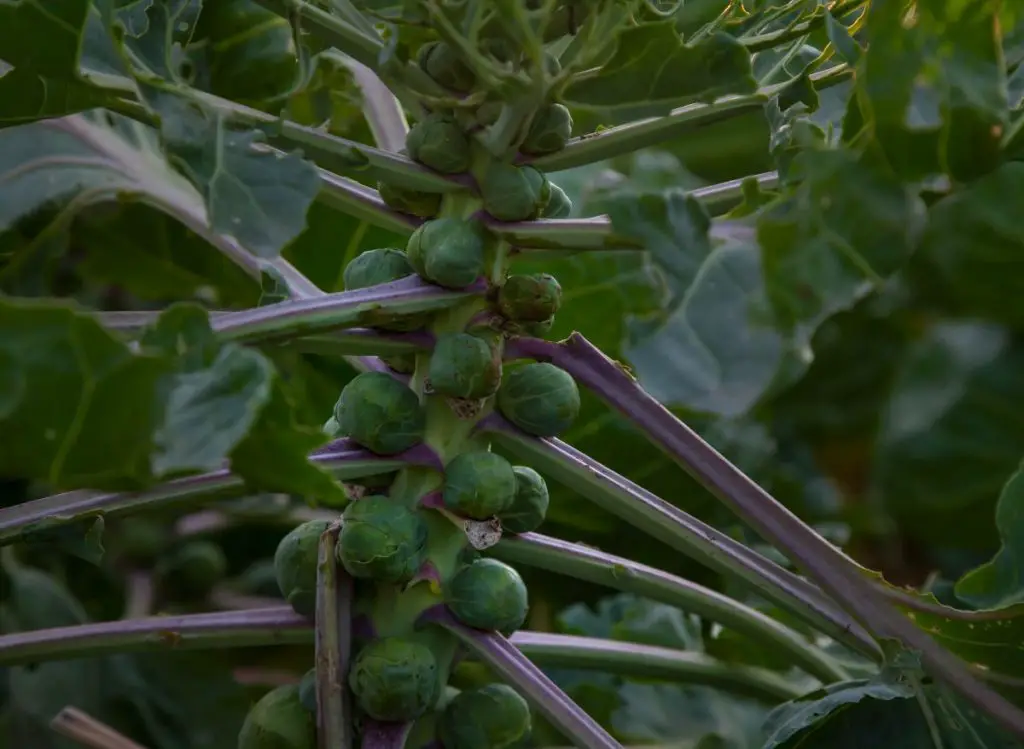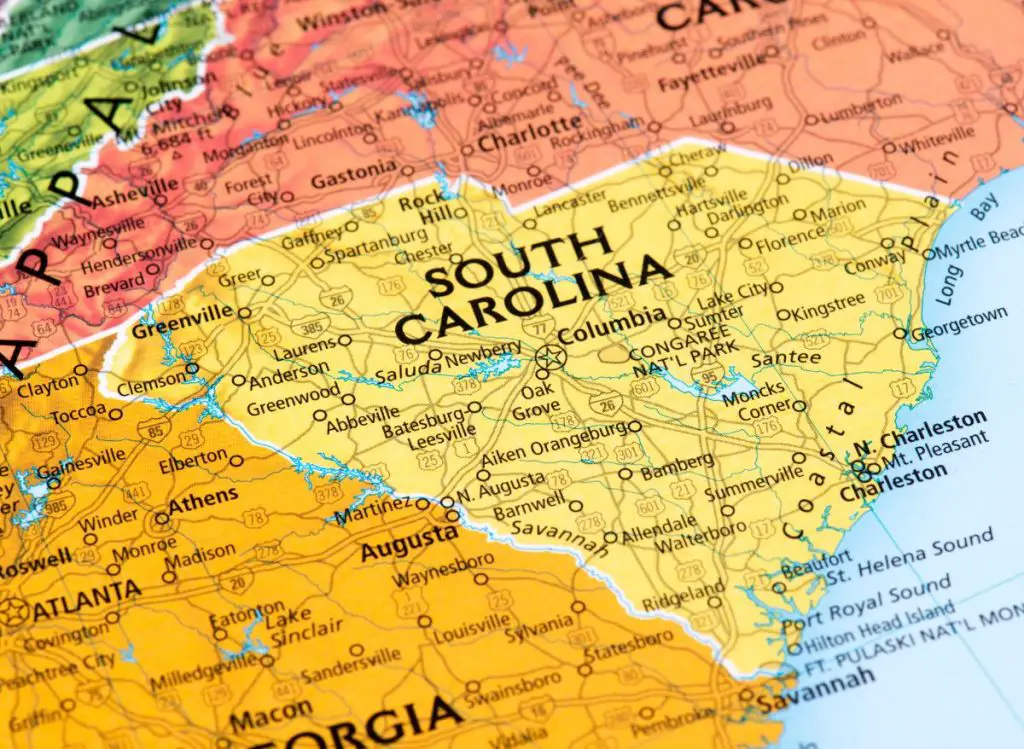
Named for the Belgian city and they have grown around for 400 years, Brussels sprouts are a member of the cabbage family and close cousins of broccoli, cauliflower, and kale grows best in cool, humid climates.
When to plant Brussels sprouts in South Carolina? Generally, the best time to plant Brussels sprouts outside in South Carolina is when there hasn’t been a frost for about two weeks in your area. Brussels sprouts, scientifically known as Brassica oleracea var. gemmifera, are slow-growing vegetables with a long season of about 80 to 100 days, depending on the variety.
Read on to find out how to successfully plant, grow, care and harvest Brussels sprouts in South Carolina.
You might also love reading: When To Plant Collards In South Carolina?
Brussels Sprouts Plant Characteristics
To successfully grow Brussels sprouts, it is essential to understand their growth conditions. The table below contains the general characteristics of the Brussels sprouts plant.
| Common names | – Brussels Sprouts – Sprouts |
| Genus | Brassica |
| Species | Oleracea |
| Family | Brassicaceae |
| Plant Type | – Annual – Vegetable – Cool Season Vegetable – Edible |
| Mature size | – Height: 24 to 36 inches (60.96 to 91.44 cm) – Width: 12 to 24 inches ( 30.48 to 60.96 cm) |
| Light requirement | – Brussel Sprouts thrive in full sun, about six or more hours of direct sunlight a day, – Or also do well in partial shade with only 2 to 6 hours of direct sunlight only. |
| Preferred Propagation Strategy | Seed |
| Soil pH Requirements | 6.0 to 8.0 |
| Best Soil For Brussels Sprouts | – Clay – Sandy – Loam (Silt) |
| Soil Drainage | Brussels sprouts do well in moist and well-drained soil |
| USDA Plant Hardiness Zone | 2 to 11 |
| Country Of Origin | Brussels, Belgium |
| Insects Other Plant Problems | – Aphids – Cabbageworm – Caterpillars – Slugs – And flea beetles |
| Diseases | – Leaf spots – Black rot – And blackleg |
When To Plant Brussels Sprouts In South Carolina?
The best time to plant Brussels sprouts outside in South Carolina is whenever there hasn’t been a frost for about two weeks. I suggest you plant your Brussels sprouts during the cool temperatures of early spring and fall. Brussels sprouts require room to spread out. It is a good idea to space them 18 to 24 inches (45.72 to 60.96 cm) apart in an area and ensure they get six or more hours of sun daily and has well-drained, fertile soil with a pH of 6.8.
Finding the right time to plant Brussels sprouts in South Carolina can be challenging because Brussel Sprouts cannot typically survive frost or freezing weather under 40 degrees Fahrenheit.
Therefore, they will die if you plant Brussels sprouts outside too early in the spring. Also, if you grow them too late, your Brussels sprouts won’t be fruitful before the first frost arrives in the fall.

South Carolina By Gardening Regions
The table below contains a breakdown of gardening regions in South Carolina.
| Piedmont | Coastal Plain |
| – Anderson – Abbeville – Chester – Cherokee – Fairfield – Chesterfield – Edgefield – Kershaw – Greenville – Greenwood – Marlboro – Lancaster – Laurens – Newberry – McCormick – Pickens – Oconee – Spartanburg – Saluda – York Counties – Union | – Aiken – Bamberg – Allendale – Beaufort – Barnwell – Calhoun – Berkeley – Clarendon – Charleston – Dillon – Colleton – Darlington – Florence – Dorchester – Hampton – Georgetown – Lee – Horry – Jasper – Marion – Lexington – Richland – Orangeburg – Williamsburg Counties – And Sumter |
What Crops And When Can You Plant Them In South Carolina?
When vegetables are planted outside in South Carolina depends on the cold hardiness of the crops.
Typically, vegetables can be categorized into two types based on temperature requirements: cool-season and warm-season crops.
- Cool-season vegetables generally grow poorly in the summer heat: If you plan to grow cool-season crops that continue to thrive well past the earliest freeze in the fall, ensure you start them early enough to mature before hard freezes appear.
- Warm-season crops mostly require warm weather for seed germination and plant growth: They are damaged by freezing temperatures and should not be grown outdoors in the spring without protection or until the danger of freezing temperatures is past.
- If you decide to plant warm-season crops in the summer, make sure you plant them early enough to harvest them before the killing freeze in the fall.
The table below shows planting dates in South Carolina:
| Plants Types | Dates to Plant in Piedmont During Spring | Dates to Plant in Piedmont During Fall | Dates to Plant in Coastal During Spring | Dates to Plant in Coastal During Fall | Days to Harvest |
| Brussels Sprouts | Not a good idea | August 15th to September 15th | Not a good idea | September 15th to October 15th | 90 to 100 days |
| Pole Beans | April 15th to July 1st | July 20th to August 1st | April 1st to June 1st | August 1st to September 1st | 60 to 70 days |
| Lima Beans | May 1st to June 15th | July 1st to July 15th | April 15th to June 1st | July 15th to August 1st | 65 to 75 days |
| Broccoli | March 20th to April 30th | August 15th to September 15th | March 1st to April 10th | Sept 1st to Sept 30th | 60 to 70 days |
| Carrots | February 15th to March 31th | August 1st to Sep 15th | February 1st to March 15th | Sept 1st to Sept 15th | 60 to 70 days |
| Beets | March 15th to May 31 | July 15th to Aug 31 | February 15th to Mar 31 | Aug 15th to Sept 30 | 50 to 60 days |
| Cabbage | March 15th to April 30th | July 15th to August 31 | February 1st to March 31 | August 15th to September 30th | 60 to 80 days |
| Tomato | May 1 to June 30 | Not a good idea | March 1 to April 30th | July 1st to Jul 31 | 70 to 80 days |
| Summer Squash | April 15th to Jul 31 | July 15th to August 15th | March 15th to July 31 | August 1st to Aug 31 | 50 to 60 days |
| Winter Squash | April 15th to June 15th | Not a good idea | March 20th to May 1 | August 1st to August 31 | 90 to 120 days |
| Pepper | May 1st to June 30 | Not a good idea | April 1st to May 15th | July 10th to August 10th | 60 to 70 days |
| Collards | March 15th to June 30th | August 1st to September 30th | February 1st to June 15th | August 1st to October 30th | 60 to 70 days |
| Kale | March 15th to June 30 | August 1st to September 30th | February 1st to June 15th | August 1st to October 30th | 50 to 55 days |
| Cucumber | April 15th to June 5th | August 1st to September 30th | March 15th to May 15th | August 1st to August 30th | 50 to 60 days |
| Lettuce | March 1st to May 15th | Not a good idea | February 1st to April 15th | September 5th to November 1st | About 40 to 70 days |
| Turnips | March 15 to April 30th | August 1st to September 15th | February 1st to April 1st | August 1st to September 30th | 60 to 70 days |
| Garden Peas | March 1st to April 5th | August 15th to October 30th | February 1st to March 15th | August 15th to November 30th | 65 to 80 days |
| Southern Peas | April 15th to July 15th | Not a good idea | April 1st to June 15th | July 15th to August 1st | 75 to 85 days |
| Spinach | March 15th to April 15th | August 1st to September 30th | February 1st to April 1st | August 15th to October 15th | 50 to 60 days |
What to read next:
- 6 Homemade Bug Sprays For Your Vegetable Plants That Work.
- When Is The Right Time To Plant Collards In Georgia? (Including tips for growing collards In Georgia)
- What To Plant With Tomatoes In Raised Bed: With 23 Best Tomato Companion Plants.
Wrapping Up
The best time to grow Brussels sprouts depends on where you live in South Carolina. In Piedmont, during Fall, the best time to grow Brussels sprouts is between August 15th to September 15th, and in Coastal, during Fall best time to grow Brussels sprouts is September 15th to October 15th, according to expert gardeners from Clemson University.
With proper care, you can produce a wide variety of crops in South Carolina; I suggest you follow the recommended planting time for optimal results.

